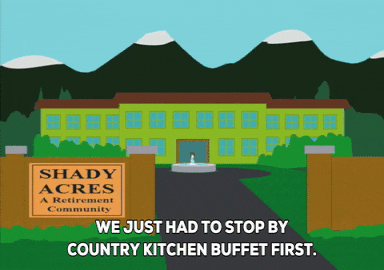📺 Watch this and other posts on YouTube or listen on Spotify, Apple Podcasts, and YouTube Music.
Intro
So let’s be honest—most people would rather not think about this stuff. Aging? Care? These aren't exactly fun topics.


Yet here you are, diving into one of life’s most important topics—kudos to you! 🙌🏼 You’re setting yourself up to make smart care choices, stay financially prepared, and remain in control.
At Long Term What? we value your time. You can expect fun, practical guidance to help you take action on LTC.
LTC stands for long-term care, but here we also use it as an acronym for some goals: Learn about options, Talk with family, and Create a plan—so care recipients and caregivers can live their best lives. You’ll see these goals pop up throughout the posts.
We’ve got lots of posts in our Care topic. If you'd like a guided tour, just hit the 'next post' button at the bottom of this (and every) post.
Post jargon
assisted living: a type of residential care that assists with ADLs
CCRC: continuing care retirement community; housing with many LTC services
hospice: end-of-life care (usually under 6 months)
LTC: long-term care
LTCi: long-term care insurance
nursing home: like a hospital, but with fewer doctors and for LTC
➡️ Explore all the LTC jargon
What is long-term care?
LTC is help with everyday tasks, like bathing, dressing, using the bathroom, moving around, and eating.
It’s not end-of-life care. That’s hospice. Long-term care can last for years. People still enjoy time with friends, family, and Seinfeld reruns.

Explore more in this post:

Why do you need it?
People need long-term care due to illness, injury, cognitive decline, or—more often—just aging.
The first tasks to become difficult are bathing and dressing as fine motor skills decline.
Bending on a slippery floor and tying shoelaces gets harder as you age.
When does it happen?
Most people require long-term care in their late 70s or early 80s—sometimes even sooner.
It’s tough to avoid. Eating well and staying active can keep you healthy, but there’s a catch—living longer can also increase the chances of needing long-term care. 🙃
Now, you may be thinking, "Yeah, but what about that one guy who got younger over time?"

Who needs it?
You might ask yourself, "Wait, are celebrities affected by long-term care?"
Well, yes. They're just like us. Watch this 2-minute video to learn more.
Maria is right. You or a loved one have a whopping 70% chance of needing long-term care at some point.
The reality is that you or a family member will need long-term care. You just don't know when and for how long.
The average person requires 3 years of long-term care. However, Alzheimer’s patients require 8 to 10 years, with some needing up to 20 years.
It doesn’t just affect the person receiving care—it impacts spouses and kids.
Even with unconditional love, helping someone with everyday tasks takes an emotional, physical, and financial toll.
Picture your son or daughter helping you take a bath.

That’s my kid. And I guarantee that’s the face she’d make if I asked her for bath help.
Beyond the “ick” factor, it’s just physically demanding. Imagine a loved one trying to lift you out of the tub. I outweigh everyone in my family—so that’s not happening.

Where does care happen?
Senior communities often get a bad rap, with some people seeing them as places to avoid. Just think of The Golden Girls, where the running joke is about Sophia getting sent back to Shady Pines.
This place even appeared in an episode of South Park.

In reality, many seniors love these communities. They offer a comfortable, home-like setting with plenty of social activities and support.
In upcoming posts, we’ll explore all your options.







How much does it cost?
If your family doesn't provide assistance, professional care can be expensive. For example, home care averages $78,000 per year (based on 44 hours a week), while a year in a nursing home costs around $127,000.

If these numbers feel like Monopoly money, seriously consider where you'd get $100,000 today for just one year of nursing care. 😬
What about Medicare and that other thing?
- 🔴 Medicare doesn't pay for long-term care.
- 🔴 MedicAID only pays if you have severe financial hardship or a disability.
- 🔴 Private health insurance doesn't pay for long-term care.
- 🟢 Long-term care insurance pays for LTC.
So LTC is typically funded through personal savings or a long-term care insurance policy.


What is long-term care insurance?
Long-term care insurance (LTCi) can help cover the costs of professional care if you ever need it. The industry has evolved significantly, offering more options than ever before.
In our insurance posts, we’ll guide you through the differences between traditional and hybrid policies, help you determine if LTCi is the right choice for you, and explore specific policy options.

Why plan ahead?
Planning helps to get everyone on the same page when it comes to caregiving.
Families should have The Talk—the caregiving conversation. Is it awkward? Absolutely. But it's really important.


Wrap up
Watch this cute 9-minute video from 2019 about family members discussing long-term care. It's a little long but worth it.
Thanks for taking the first step! Keep reading to feel confident and prepared for any care decisions ahead. 👍🏼





















